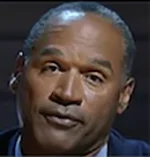 |
| Jon Gingerich |
It’s hard to imagine the state of the U.S. media getting worse than it currently is. And yet, something tells me we’ll find ourselves surveying new lows next year.
Partisan pandering and a polarizing political climate have left trust in the national news at a nadir. Fewer than a third of Americans (31 percent) trust reporting by national news outlets these days, according to a new Knight Foundation/Gallup study, and an October survey from Morning Consult found that media organizations now account for nearly all of the companies with the biggest net favorability gaps between Democrats and Republicans.
It doesn’t help perceptions of our media sector being controlled by “coastal elites” that the industry has, in fact, grown more centralized. (About 20 percent of the nation’s newsroom employees now live in New York, Los Angeles or Washington, D.C., according to recent Pew Research Center analysis of U.S. Census Bureau data.). Altogether, trust and confidence in the media among Americans identifying as conservative stands at only 23 percent, according to a 2018 Poynter Institute survey.
Then there’s the fact that calling the news business an unstable enterprise in 2019 qualifies for understatement of the year. The number of newspaper newsroom employees dropped by nearly half (47 percent) between 2008 and 2018, or from about 71,000 staffers to 38,000, according to Pew Research numbers. Job losses across the U.S. news sector rose 28 percent in 2018 alone.
Consider this year’s casualties so far. The closure of Youngstown Ohio’s The Vindicator, which debuted in 1869, has left that Steel Valley mainstay as the largest city in the country without a daily print paper. Washington, D.C.’s Vox Media now owns New York magazine. The pending merger of the nation’s two largest newspaper chains—GateHouse Media and Gannett—despite creating the largest U.S. media company by print circulation, may lead to the end of USA Today’s print version, according to rumors. Family Circle, which has been in publication since 1932 and still boasts a circulation of four million, will shutter by the end of the year. I could go on.
All this consolidation and cost-cutting means smaller newsrooms, dwindling resources, fewer pages, less content. This, in turn, assures fewer future readers, which results in declining future ad revenues (the greatest challenge facing journalism, according to a recent global survey of reporters), all setting the stage for more future cuts. Our news industry is circling the drain.
At the same time, it deserves mentioning that online advertising is booming. Digital ad revenues in the U.S. are set to surpass traditional ad buys in the U.S. for the first time this year and crossed the $100 billion threshold for the first time in 2018, according to an Interactive Advertising Bureau report.
And yet, distrust in digital media is even higher than its polarizing analogue counterpart. Partisanship and the “fake news” phenomenon have rendered the Internet a playground for the misinformed, worsening the media’s ongoing trust problem. Online news outlets, regardless of whether they lean left or right, are seen as the least-trusted media brands in America, according to a 2017 University of Missouri study. And a 2018 Cision report found that more than half of Americans (56 percent) claim fake news via the Internet has made them more skeptical of content produced by bona fide newsrooms. A majority of Americans (63 percent) now consider the fake news phenomenon to be a “major problem” in the U.S., according to a 2019 Institute for Public Relations survey, one on par with gun violence (also 63 percent) and terrorism (66 percent).
Everyone is a content publisher these days, but as it turns out, not everyone should be. The current online model also isn’t a sustainable one, and if the press is going to be saved in this country, we need to fortify a sense of trust in the only economically viable media environment we’re going to have left in five years.
Consider the one area of media where some semblance of trust remains: the local news. All things considered, trust in local media outlets remains unusually high when compared to their national counterparts. According to the Knight/Gallup survey, nearly half of Americans (45 percent) trust reporting by their local news “a great deal,” 61 percent believe these outlets do a good job of educating them on what’s going on in their community, and 51 percent don’t feel these organizations have become more biased in recent years.
Granted, the news isn’t a service many are compelled to pay for these days (84 percent of Americans admit they didn’t pay for local news coverage of any kind last year, according to a March Pew Research report) and alas, these are the very outlets that are disappearing at blinding speed across the country. But if we found a way to instill the sense of trust Americans have for their local news with the revenue potential that’s made digital media a boon, it could be the day we stumble upon a model that actually works.
Nature abhors a vacuum; information is everywhere, but trust in that information remains in shockingly short supply. For this reason, I think a coming phase for media could be quality, expert-produced content on trustworthy platforms that attracts regular reading habits among an audience of devotees. And call me an optimist, but when that day happens, it may serve as the death knell for the web’s current proliferation of bad content. Some of us might even be willing to pay for it.


 Southern governors claim they know what's best for their working class, and it's not pay raises... A Ukrainian human rights group played a key role in convincing House Speaker Mike Johnson to hold a vote to send arms to Ukraine, Israel and Taiwan... Trump Media & Technology Group blames short-selling and not lousy outlook for its stock slump.
Southern governors claim they know what's best for their working class, and it's not pay raises... A Ukrainian human rights group played a key role in convincing House Speaker Mike Johnson to hold a vote to send arms to Ukraine, Israel and Taiwan... Trump Media & Technology Group blames short-selling and not lousy outlook for its stock slump. The techniques deployed by OJ Simpson's defense team in the 'trial of the century' served as a harbinger for those used by Donald Trump... People worry about the politicization of medical science just as much as they fret about another pandemic, according to Edelman Trust Barometer... Book bans aren't restricted to red states as deep blue Illinois, Connecticut and Maryland challenged at least 100 titles in 2023.
The techniques deployed by OJ Simpson's defense team in the 'trial of the century' served as a harbinger for those used by Donald Trump... People worry about the politicization of medical science just as much as they fret about another pandemic, according to Edelman Trust Barometer... Book bans aren't restricted to red states as deep blue Illinois, Connecticut and Maryland challenged at least 100 titles in 2023. The NBA, which promotes legalized gambling 24/7, seems more than hypocritical for banning player for placing bets... Diocese of Brooklyn promises to issue press release the next time one of its priests is charged with sexual abuse... Truth Social aspires to be one of Donald Trump's iconic American brands, just like Trump University or Trump Steaks or Trump Ice Cubes.
The NBA, which promotes legalized gambling 24/7, seems more than hypocritical for banning player for placing bets... Diocese of Brooklyn promises to issue press release the next time one of its priests is charged with sexual abuse... Truth Social aspires to be one of Donald Trump's iconic American brands, just like Trump University or Trump Steaks or Trump Ice Cubes. Publicis Groupe CEO Arthur Sadoun puts competition on notice... Macy's throws in the towel as it appoints two directors nominated by its unwanted suitor... The Profile in Wimpery Award goes to the Ford Presidential Foundation for stiffing American hero and former Wyoming Congresswoman Liz Cheney.
Publicis Groupe CEO Arthur Sadoun puts competition on notice... Macy's throws in the towel as it appoints two directors nominated by its unwanted suitor... The Profile in Wimpery Award goes to the Ford Presidential Foundation for stiffing American hero and former Wyoming Congresswoman Liz Cheney. JPMorgan Chase chief Jamie Dimon's "letter to shareholders" is a must-read for PR people and others interested in fixing America and living up to its potential... Get ready for the PPE shortage when the next pandemic hits... Nixing Netanyahu. Gaza carnage turns US opinion against Israel's prime minister.
JPMorgan Chase chief Jamie Dimon's "letter to shareholders" is a must-read for PR people and others interested in fixing America and living up to its potential... Get ready for the PPE shortage when the next pandemic hits... Nixing Netanyahu. Gaza carnage turns US opinion against Israel's prime minister.


 Have a comment? Send it to
Have a comment? Send it to 
No comments have been submitted for this story yet.